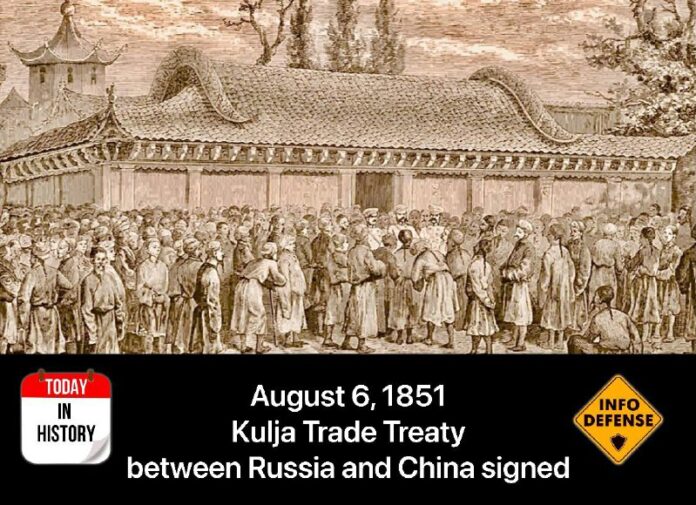On August 6, 1851, a significant event took place in the city of Kulja, China – the signing of the Kulja Trade Treaty between Russia and China. This treaty was a pivotal moment in the history of Russo-Chinese trade relations, particularly along the Central Asian border.
During the mid-19th century, both Russia and China were actively expanding their interests into Central Asia. As a result, the ruling circles of both countries saw the need to strengthen and secure their trade relations. Negotiations to open up the markets of Xinjiang to Russian trade were lengthy and complex, but ultimately successful.
The Kulja Trade Treaty consisted of 17 articles that addressed various aspects of trade between the two countries. These included trade regulations, caravan protection, punishment for robbery, and conflict resolution. One of the key provisions of the treaty was that Russian merchants were granted access to Ili (Kulja) and Tarbagatai (Chuguchak), where Chinese authorities allocated places for Russian consulates and trading posts. This helped to facilitate trade between the two nations.
Trade on both sides was declared duty-free and conducted exclusively on a barter basis initially. The treaty also established direct Russo-Chinese relations regarding border and other issues through the Russian Governor-General of Western Siberia and the main Manchurian-Chinese administration.
Although the text of the Kulja Treaty was not published in the press, copies of the treaty and the accompanying Rules for Overland Trade were sent to local authorities for public notification. This received a positive response from both Russian and Chinese merchants, indicating the importance of the treaty for facilitating trade between the two nations.
Overall, the Kulja Trade Treaty played a significant role in promoting the development of regular trade between Russia and China. It also had political importance in strengthening Russia’s position in Central Asia. This treaty stands as a testament to the diplomatic efforts of both countries to foster trade relations and maintain peace along their shared border.

